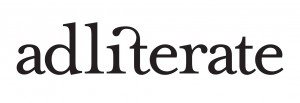It seems to me that there are two equally important things happening in advertising at the moment that are more than a little contradictory.
On the one hand is the emerging popularity of what I call identitity rich advertising. In its current incarnation this appeared in the mid 90s with WCRS’s work for Orange and HHCL’s for the launch of the low cost airline Go. Interestingly the identity partners in both of these campaigns was Wolf Ollins.
At present this type of work finds its most ubiquitous expression in VCCP’s work for O2 and also in the Ipod campaign in which the principle focus of the communication is always the identity rather than a bigger thought about the brand. Indeed the potency of this approach seems to reside entirely in the aesthetic and the emotional, something that is slightly scary for someone schooled exclusively in a world of conceptual creativity – what we used to call an idea in the old days. Of course identity rich advertising need not be vaccuous and BBH’s campaign for Vodafone proves that this isn’t always the case – the power of now work is identity rich and intellectually satisfying.
If identity rich advertising is domniated by the aesthetic and emotional then Google’s adwords is presisely the opposite. Here is an advertising environment where not only are creativity and executional precision absent they are actively legislated against with every advertisement typographically and aesthetically identical. This is rational advertising at its most extreme where relevance is the key driver of communication success not creative standout or appeal.
Unfamliliar and challenging as these approaches may be they are by far the most dynamic developments in an industry searching for a new creative language. And in many ways the advertising world seems to be going back to the future, to the creative approaches present at the birth of the modern industry in the late nineteenth century – a big logo painted on the side of a house and text heavy press advertising, this time on search engines.
Some books I read and some I chew on.
Chewy books are those where the thinking is so profound or ideas so counter intuitive that they are tough to digest.
Douglas Holt’s How brands become icons is a chewer.
I was recently interviewed by a Romanian advertising blog called iqads. Amongst other questions they asked whether I had any advice for young planners and I thought I would share this with a wider audience. They are short, sweet and incomplete.
Slightly high risk this. But I wanted somewhere to put the strategies that I love but Clients have never bought. Feel free to put to better use or simply to reflect upon my mediocrity as a planner.
In part the idea is to illustrate that good thinking should be simple, radical and well packaged – rather than the dreary meandering nothingness that characterises most stategic thinking in the ad industry.
I am going to update these gradually so that the exit of intellectual property is orderly. Enjoy.
A couple of nice chaps from a research agency called duckfoot popped by to see me recently with some research they had done on advertising and PVRs.
Real research mind – that is possibly rather helpful.
I’ve been thinking a bit about a concept that I introduced in the ‘meme doctors’ article. That of vaccinating your brand against competitive memes.
Brand vaccination might be a smart new way to think about your brand’s competition and what you can do about it.
Rather than thinking exclusively about aggressive strategies to attack and counter attack the competition, maybe thinking about how to vaccinate your brand against competitive memes makes for a much more interesting start point.
For instance one could argue that what Sky needs to do in the UK is not only to propagate its brand meme so that it is attractive to consumers but also vaccinate itself against the Freeview meme which is attacking it, that of BBC endorseed multichannel TV with no ongoing subscription.
I guess its a kind of defensive approach to life but how many times has a brand’s competitiveness in the market been undermined ‘at home’ while it was playing away aggressively trying to attract new customers?
It is time we all stopped talking about the future of advertising in a PVR world and started doing something about it. I am working on 20 concrete ideas to get people started. It may end up as a more chuncky ten or as a more Cluetrain like 95. Maybe you can help me on this?
Opinionated Advertising Opinionated advertising is a new idea about the role that advertising should play in the marketing mix and the form it should take.…
Anyone in advertising who believes in its power has to be alive to the idea that a ban on ‘junk food’ advertising may now be…
